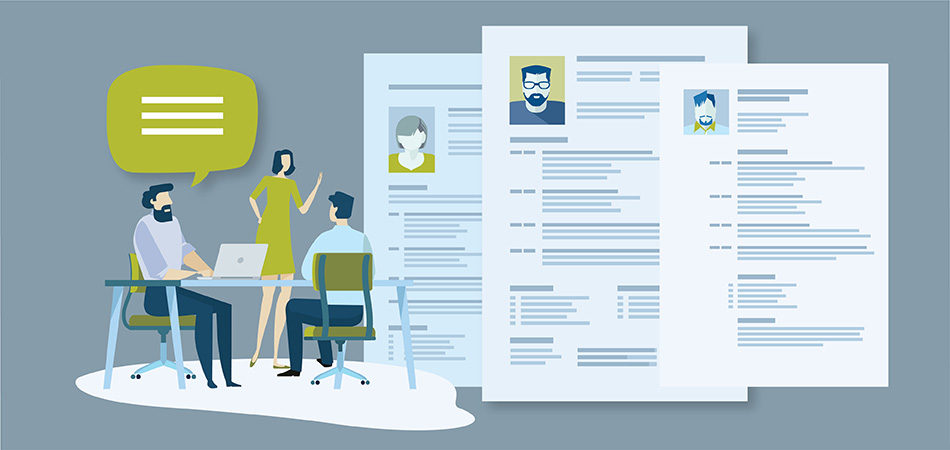Writing great job descriptions isn’t enough. Your descriptions need to stand out, and part of that is making sure your job descriptions get seen. Could your approach use a refresh?

For many, the first impression candidates get of your company culture and employer brand is through your job descriptions. These descriptions need to be written with concise, searchable language that clearly communicates meaningful information about what the position entails and why it matters.
Writing for people to optimize for bots
The first step in connecting top talent with your company’s open positions is making sure they rank for search and Google for Jobs is changing the game for how candidates come across your job descriptions. Google for Jobs aggregates listings from job boards and career sites based on common user search phrases. This means that your listings must feature language that they are likely using to find the positions that matches their skillset with the companies that meet their culture requirements.
Historically, job descriptions have either been too lengthy and technical to be user-friendly and readable, or they've been so high-level that readers get through the descriptions without really understanding what the position actually entails. Neither approach offers candidates what they need to make informed application decisions, but there are some straightforward tactics that will make your organization’s job descriptions stand out, clearly communicate needs and help attract the right candidates while improving search rankings.
8 tactics for writing winning, searchable job descriptions:
- Think ‘outside in,’ not ‘inside out.’ The purpose of a job description is to help a candidate determine whether they’d be a good fit for the role, for your company and for your culture – so when you’re writing a job description, remember you’re writing it for someone who has no knowledge of your organization’s inner workings. Provide background and perspective – but don’t include a large paragraph explaining what your company does. That’s what your careers website is for.
- Use a conversational tone. Think about how you’d describe a job to a candidate if you were speaking directly to him or her, then write the job description that way. Regardless of how formal or casual your culture is, the person reading the job description is just that – a person. Talking to them through your job descriptions by writing in a relatable way can help create the connection that drives them to apply.
- Kill the buzzwords. The use of industry jargon and buzzwords may be part of the day-to-day, but to an external candidate, they can be alienating. Read through your job description to identify and cut the buzzwords you have to explain to new employees. Better yet, have a third party provide a communications audit to review your job descriptions and identify opportunities for clarity.
- Help them visualize. One of the most important questions candidates have across the board is, “What is it really like to work here?” They want to know who they’ll be working with, where they’ll be working and what the average day is like. A great tool for helping candidates visualize themselves in the position is to address them with the personal pronoun “you” and be specific about their responsibilities. For example: “You’ll review daily sales goals and results, and lead your team in formulating strategies to hit sales targets."
- Get to the (bullet) point. Every job description needs to include details about qualifications and responsibilities, but try to avoid long blocks of text. Keep your sentences short and use bullet points to summarize key information – this helps make the information more scannable. This is important for search as well. If you’re writing the way candidates are searching and using concise, familiar language, you’re more likely to rank in both Google searches and within job boards.
- Illustrate a ‘day in the life.’ Job descriptions should include what the position entails and how those responsibilities actually fit into an average day. This will help candidates better understand the position, its objectives and the company culture. Ask individuals already working in the role you’re hiring for to outline a day’s schedule and provide commentary, then adapt it to a bulleted list in your job description. You can link to expanded information on your careers site.
- Share attributes of top performers. You know what qualities and attributes star performers in your organization tend to possess, so call them out in your job descriptions. Make sure they’re customized for individual positions and list them in short, engaging bullet points. You can even take this opportunity to link to pages on your careers site where these employees might be featured.
- Audit completed descriptions. Have someone currently working in the role review the job description and provide feedback. It’s a great way to ensure you’re capturing the heart of what the job’s really like and attracting the candidates who’s most likely to succeed. If it’s a new position, reach out to people outside your organization for ideas and insights, then adapt what you learn to your company’s culture.
Follow these eight steps to optimize your job descriptions for search, clearly communicate your employer brand and convert ‘top talent’ to ‘top applicant,’ today.
Creating an outstanding candidate experience is key to attracting the right talent. Whether you need a job description audit, a careers site refresh or a complete employer brand overhaul, we can help.